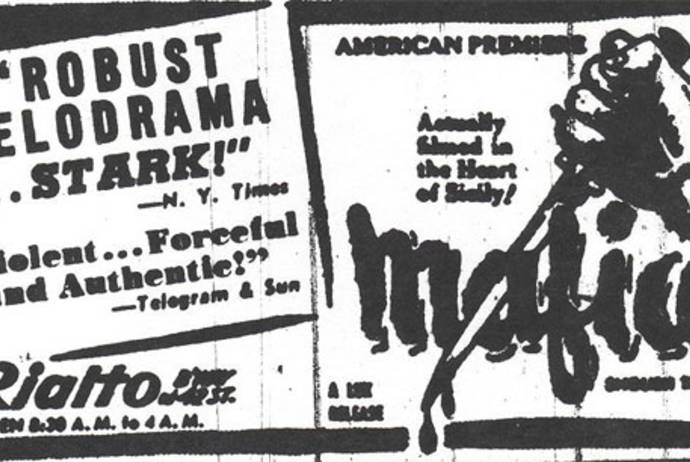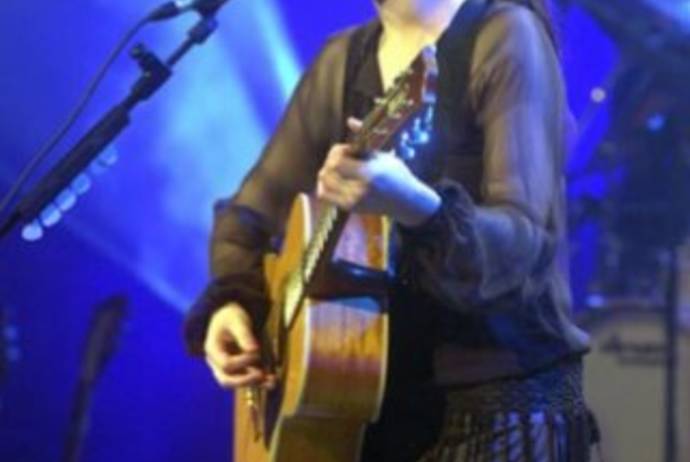Does this Dunkin’ Donuts commercial annoy you as much as it does me?
I’m sure you’ve seen it. A group of customers in an unnamed café look befuddled by the coffee menu because, omigod, the items are in a foreign language! As the dazed ones gaze at the incomprehensible words, a faux-indie rock jingle plays. The singer, in a slacker whine, complains, “My mouth can't form these words. My mind can't find these words. Is it French or is it Italian? Perhaps Fritalian.”
Then comes the kicker: actor John Goodman in a voiceover tells the viewer that at Dunkin’ Donuts you can “order your latte in English, not Fritalian.”
Evidently no one told Dunkin’ Donuts or the ad agency they hired that “latte” is indeed an Italian word.
Funny thing is, the commercial, the second “Fritalian” spot released by the fast food chain since late 2006, was made to promote its Italian coffee drinks. I quote from Dunkin’ Donuts press release:
“On Tuesday, February 26 [2008], Dunkin' Donuts wants to ensure that no coffee lover is denied a delicious espresso-based beverage. The world's largest coffee and baked goods chain will offer all customers a small latte, cappuccino or espresso drink of their choice, hot or iced, for the special price of 99 cents.”
So why make a commercial that mocks the foreign-ness of the product DD is promoting? An executive with the Dunkin' Donuts’ advertising agency says the spot is “a thinly veiled swipe at a certain competitor.” Supposedly what’s being mocked is coffee chain Starbucks, which not only sells foreign coffee drinks but sizes them as “venti” and “grande” and charges too much for them. (No argument with that last point.)
But I think the website Urban Dictionary, which posts users’ definitions of the latest neologisms, captured the essence of “Fritalian”:
Fritalian: Slang term used for a menu item with a non-English name. Favored by drones who want to order gourmet coffee without the hassle and brainwork of being mentally able to pronounce such complex foreign words as ‘dieci’ or ‘latte.’
Watching the spot, I ranted, “Just who is this bullshit aimed at?” New Yorkers certainly have no problems getting their mouths to form the words “cappuccino” or “venti caffe latte” when they’re at their local coffee bar. And I know my city is hardly the only one whose residents can accomplish this feat.
My partner Rob suggested that the ads must be aimed at people in “the heartland,” aka Middle America, aka the Land of No-Dagos. Towns and suburbs where the folks presumably have never heard anything but English words.
Ma dai. This just isn’t true any more. I have no doubt that there are places, perhaps many, outside the big cities where the locals have problems pronouncing Italian words. For that matter, I wish I had a euro for every time I heard a New Yorker mispronounce “bruschetta.”
But nowadays you can find Italian coffee, and cucina italiana, just about anywhere. As David Chase, creator of The Sopranos, said in an interview, it pleased him that Italian food was the most popular cuisine in America, and that there are “trattorias and buffalo mozzarella all over the country.”
I recently spent a few days in Greensboro, North Carolina, staying at the home of an Italian American university professor and his Southern born and bred wife. They informed me that the local restaurants weren’t very good and suggested we eat in. Fine. I didn’t want strip-mall Chinese or barbecue, which I, with my New York attitude, assumed would be the basic choices. And anyway I love to cook.
So we went to the local supermarket, a place called Harris Teeter. Now the name may conjure up for you, as it did for me, images of cattle feed and 50-pound bags of fertilizer. But the market over the years had evolved from a small greengrocer to a megastore locals now call the Taj Mahal, much the same way Balducci’s in New York grew from an immigrant-run fruit and vegetable stand to an upscale gourmet market.
The professor is of Sicilian background, as am I. So we decided dinner would be cucina siciliana. But would we be able to find the ingredients we needed? For the pasta alla norma would I have to make do with -- dio proibisca – Kraft’s “parmesan” in lieu of ricotta salata? Ronzoni instead of De Cecco? Hunts tomatoes rather than those imported San Marzano beauties?
Turns out I was the provincial one for thinking such thoughts. Harris Teeter was a typical suburban supermarket, the size of a couple of football fields with aisles wide enough to drive a truck through. I’ve seen stores like this before and they always amaze me, much like our skyscrapers stun visitors from places where the skyline isn’t dominated by 40-storey towers.
But what really surprised me was what was on the shelves. Fresh basil, rosemary and oregano. Arugula. Broccoli rab. (I remember when the only Americans who enjoyed that wonderfully bitter cruciferous green were us paisans.) Portobello and cremini mushrooms. Imported Italian baby eggplants perfect for the pasta alla norma. Cold-pressed extra virgin olive oil from Puglia and Sicily. De Cecco pasta, and a few other imported varieties. And not only San Marzano canned tomatoes, but a brand I buy in NYC whose label identifies their provenance not as Italy or Campania but Nocerino-Sarnese. This all was delightful. But now the acid test: would Harris Teeter have ricotta salata?
Yes it did. A brand made in America, but ricotta salata nonetheless, and if not quite as good as what I can easily find in New York, perfectly acceptable. We picked an inexpensive but good montepulciano d’Abruzzo from Harris Teeter’s wine section (no nero d’avola, unfortunately) to complement the pasta alla norma. That night, professore, moglie e io enjoyed classic cucina siciliana made from ingredients bought at a supermarket in Greensboro, North Carolina – one of those places where the locals should be, if Dunkin’ Donuts is correct, confused and resentful about consuming anything with a foreign name.
So I ask the donut and coffee chain, what were you thinking? Do you believe Americans still are having a “Freedom Fries” moment? Do you know anything about what Americans want from their fast food retailers and what they’re capable of asking for?
Maybe I’m making too much of a TV commercial, and one that’s meant to be satirical. But its assumption that Americans can’t or won’t order their coffee in “Fritalian” annoys me. And that slacker singing that irritating jingle – I want to slap him upside the head and say, “Stai zitto!”
Then I’ll tell him that that means, Shut the hell up.




































